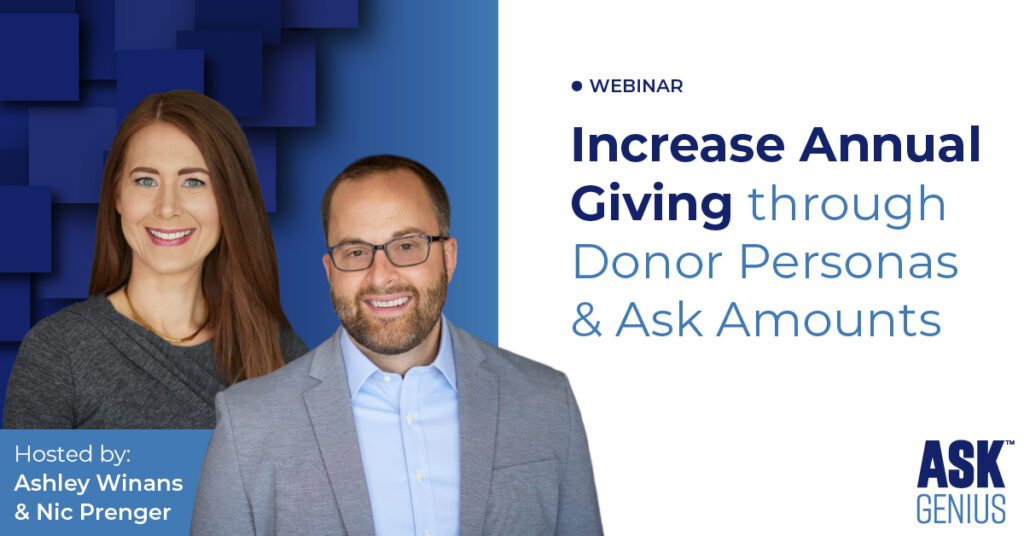It’s time to show donors some love and to work on your nonprofit’s donor retention rate. A nonprofit’s relationship with donors requires nurturing so they don’t become LYBUNT (last year but unfortunately not this year) or SYBUNT (some years but unfortunately not this year) donors. Many nonprofit organizations suffer from what fundraising researcher, Ellen Bristol, calls a “leaky bucket ”. Each year your organization is scrambling to acquire new donors because first-time donors or even long-time donors didn’t give again. Essentially, lapsed donors are the water that is draining out of holes in your bucket. To improve donor retention, you’ll need to uncover and correct holes in your communication plan. According to the most recent Fundraising Effectiveness Project donor retention is down 3.1% year over year and donors are down 7.1% from 2022 compared to 2021. Don’t lose hope just yet, total dollars fundraised are up by 4.7%, and there are some proven methods to help retain donors.
Increased giving is the good news, but where did the other donors go? Donor retention is a crucial measure of fundraising effectiveness and improves overall fundraising success. Start by calculating the donor retention rate (get a calculator here). Once you know the donor retention rate, show your current donors some love and improve your nonprofit’s donor retention rate with these five tips.
1. Send prompt thank you communications to donors
It is best to thank the donor within the first 24 hours of receiving a gift. To help with this prompt gratitude consider sending a thank you email and following up later with an additional letter and tax receipt via postal mail if that is your nonprofit’s usual practice. IRS regulations require a receipt for gifts over $250, but the best practice for donor retention is to thank every donor for every gift. Don’t forget donors who give in-kind, tangible items or those who volunteer their time.
2. Segment donors for donor-centric communications
This tip is more of a global strategy than a time-specific tip, but don’t overlook the power of this strategy. Donor segments might include first-time donors, members of giving societies, major donors, or others you are already including in your direct mail strategy. Consider segmenting donors by communication preference. Donors who are over 55 years old may want to receive direct mail and younger donors may only want to receive emails or text messages. Once you have your donor segments worked out, send donors a message of appreciation.
3. Give donors words of affirmation and show the impact they made
Like the love language, from Gary Chapman’s book The 5 Love Languages, make sure to give donors “words of affirmation” by telling them what they made possible. For example, tell them how many families they fed with their gift to the food pantry or how many nights of shelter were provided to homeless families through their donations. This personalized, donor-centric communication strategy can be done through email, a link to a recorded video, or even ringless voicemail. This can be as low-tech as your organization needs it to be and may be different for each of your donor segments.
4. Send a handwritten note to improve donor retention
In today’s world it’s easy to depend on electronic forms of communication, but a handwritten note from a staff member, or better yet a board member, can delight your donors! Since many organizations send only electronic communication, a handwritten card can stand out. And don’t underestimate the power of personalization. Include personal detail like how many years they have been giving to your organization or thank them for being a member of one of your giving societies. While it may not be feasible to write a note to every donor, consider doing this for a donor segment that will have a big impact. You might select major donors or members of a special giving circle.
5. Harness technology for custom donor-centric communications
Thanking donors can happen in several ways, but think about how to stand out in a noisy world. We covered email and handwritten thank you cards, but your nonprofit’s communication plan might include video messages or ringless voicemail to make a greater impact with donors. Harness the power of technology to thank donors promptly and cost-effectively.
Take time to calculate your donor retention rate and steward donors with messages of thanks and appreciation that stand out and inspire them to give again. Gratitude can have a huge impact on donor retention. With year-over-year donor retention numbers trending down, help your nonprofit create a donor-centric communications plan that will make donors feel appreciated and understand the impact of their giving.
To learn more about segmenting donors and harnessing the power of technology, request a demo of AskGenius today. This technology helps personalize direct mail appeal ask strings and increase funds raised.
